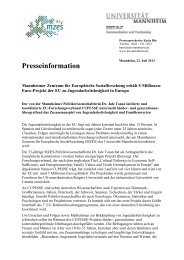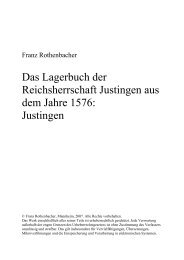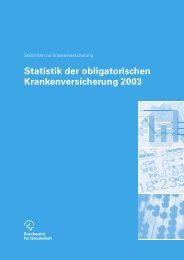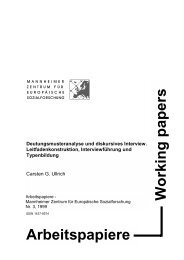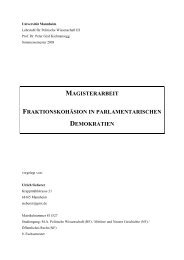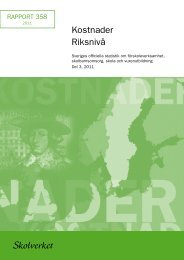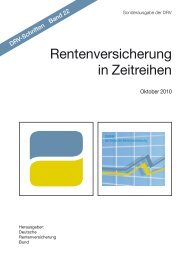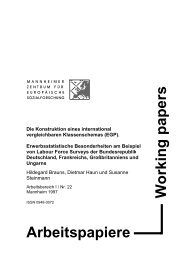Tobias Auberger and Tanja Hitzel-Cassagnes - Mzes
Tobias Auberger and Tanja Hitzel-Cassagnes - Mzes
Tobias Auberger and Tanja Hitzel-Cassagnes - Mzes
You also want an ePaper? Increase the reach of your titles
YUMPU automatically turns print PDFs into web optimized ePapers that Google loves.
9<br />
portant role in the European foreign policy after 1989 <strong>and</strong> especially in its accession<br />
strategies while, on the other h<strong>and</strong>, the c<strong>and</strong>idate states differed widely with respect to an<br />
active minority policy, to the recognition of internal minorities, <strong>and</strong> to the granting of<br />
minority rights. The practices of implementing minority <strong>and</strong> non-discrimination rights by<br />
the c<strong>and</strong>idate states during the accession negotiations showed that the actual influence of<br />
EU conditionality depended on internal conditions especially in the Eastern European countries<br />
<strong>and</strong> that national legislation differed substantially (see Wiener/Schwellnus 2004). Although<br />
the factual existence of internal <strong>and</strong> external minorities <strong>and</strong> the constellations of internal<br />
actors played a decisive role, differences regarding the incorporation of minority<br />
rights might also have stemmed from the lack of a single <strong>and</strong> coherent minority policy of<br />
the 'old' Union towards the c<strong>and</strong>idate countries. During the accession negotiations the<br />
European Union accepted <strong>and</strong> promoted quite divergent conceptions of minority protection<br />
<strong>and</strong> accordingly, different legal remedies <strong>and</strong> procedures. As the studies of Wiener <strong>and</strong><br />
Schwellnus reveal, at the time, the Union's minority policy referred to conceptions borrowing<br />
from doctrines of the United Nations on the one h<strong>and</strong>, the OSCE <strong>and</strong> Council of Europe<br />
on the other h<strong>and</strong> – which are conflicting insofar as the UN's definition of minorities is<br />
rather broad <strong>and</strong> comprehensive whereas the OSCE's conception of minority rights restricts<br />
its scope to citizens, i.e., excluding emerging groups of unsettled <strong>and</strong> precarious (legal)<br />
status (see Wiener/Schwellnus 2004: 33). This very sketchy reference might suffice to point<br />
out that within the European Union, the status of minority protection <strong>and</strong> the concepts of<br />
minority rights have been heterogeneous as well as internally contested <strong>and</strong> ambivalent<br />
(esp. if one takes Wiener’s remarks seriously, pointing at a kind of “hypocrisy” emphasising<br />
minority rights with regard to the new member states but neglecting them in an “internal”<br />
perspective).<br />
A similar picture can be drawn by examining the incorporation of the acquis in various<br />
fields like equality, non-discrimination <strong>and</strong> social rights. The European regulation of social<br />
<strong>and</strong> working st<strong>and</strong>ards, of non-discrimination rights <strong>and</strong> of measures to promote gender<br />
equality has been formally implemented in the new member states at quite an early stage.<br />
Again, rather similar to the old member states the new member states vary with respect to<br />
the conceptualization of social rights, to concrete measures <strong>and</strong> institutions as well as to the<br />
overall scope of accomplishment (see Sloat 2004). So, in a way, the mere observation of



